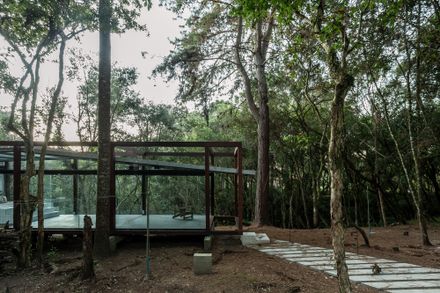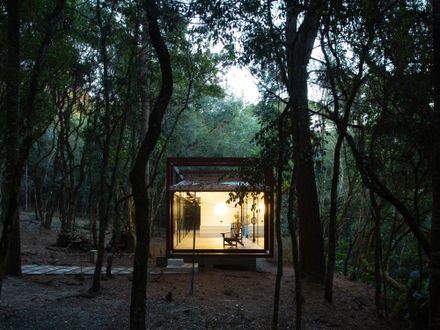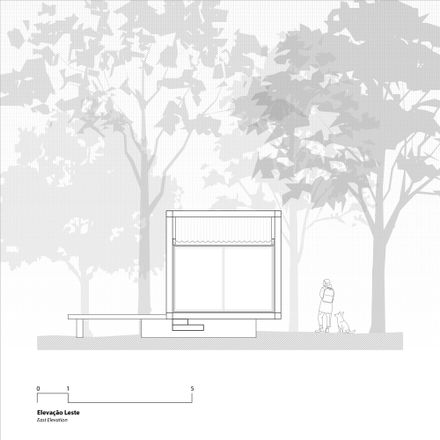Guaju Pavilion
ARCHITECTURAL ASSISTANTS
Guilherme Feijó, Isabela Sousa, Lucas Bochnie, Hannah Kumata, Renata Leite
PHOTOGRAPHS
Gabriel Tomich
MANUFACTURERS
Eternit, Injeta Telhas, Jailton Ind Vidros de Segurança, PedraCota Pedras Decorativas
AREA
797 ft²
YEAR
2023
LOCATION
Guajuvira, Brazil
CATEGORY
Healthcare Architecture, Small Scale
In the district of Guajuvira, 35 km away from the city of Curitiba, Brazil, the countryside landscape sustained by small agribusiness families is constantly interspersed with remnants of native Atlantic Forest vegetation.
Often protecting water sources and small streams that flow into the Iguaçu river basin, these forest clusters are home to protected species, such as the Araucaria - the tree that gives the town its name.
In this native landscape, in a less dense portion of the forest, the architects were commissioned to create a space for relaxation, silence, and physical activity - with the fundamental premise of neutralizing built intervention amid the existing natural condition, or to at least mitigate its visual presence.
The concept of a pavilion made up of dry materials to be assembled on site came as a response to reduce the impact of debris (mortar, concrete, cement) and to reduce construction time.
The slender pavilion-like volume has a shape meant to fit within the free space among the trees so that none had to be cut down.
At the request of the client, who follows the Tibetan Buddhist tradition, the construction should disturb the soil as little as possible, also reducing the impact on local fauna.
By raising the pavilion on concrete beams, the site topography is kept unchanged and also allows the crossing of armadillos, ants, and lizards.
A series of porticos made of solid Itaúba wood line up in a three-and-a-half-meter modulation - composing square frames on all vertical and horizontal surfaces of the pavilion - to contain and to structure, from the outside, the almost intangible space encased by the transparent glass seal.
A fitness room, a bathtub adjacent to the white bathroom volume, and a living and meditation room make up the 74 m² of the pavilion, with small balconies at both ends.
The floor and ceiling are as thin as possible while meeting the physical demands of supporting weight and protecting from the weather.
The rest of the space is made by no more than light coming into the building, inviting the natural external environment to complete the architecture.
Throughout the day, the light fills the interior spaces with the ever-changing tones of the many layers of vegetation, With 12 openings, which slide outwards in pairs, the interior environment can be kept fresh by allowing for unobstructed wind flow.
With the windows open, the nearby stream can also be heard, so that all of the human senses capture the feeling of being directly in the middle of the Guajuvira forest.































